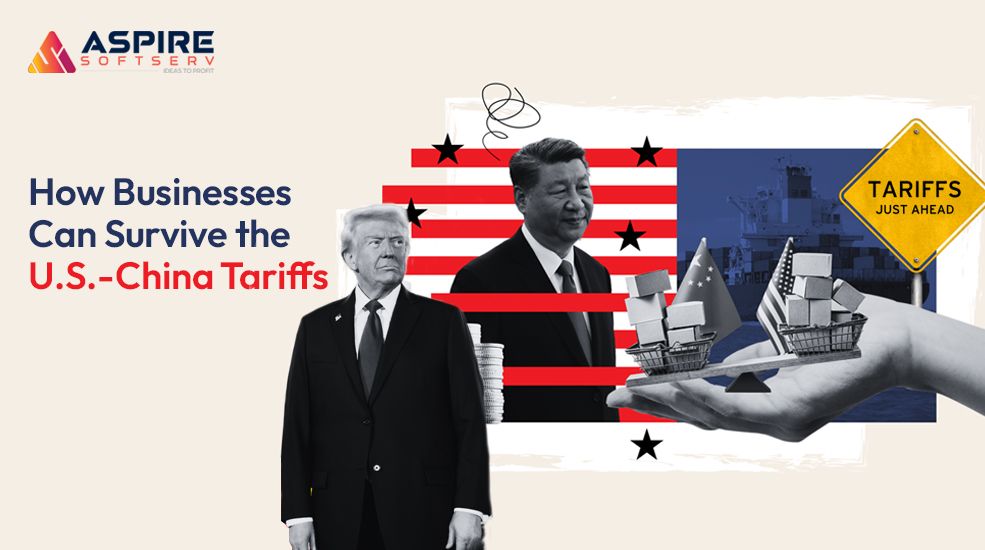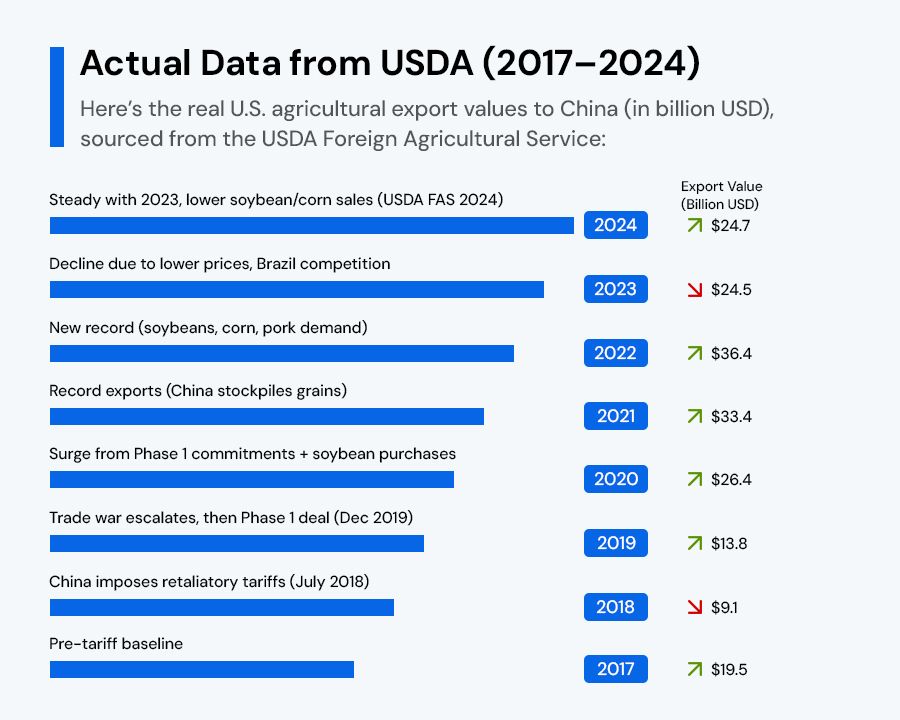
The trade disagreement between the U.S. and China keeps getting tougher. It’s April 2025, and the latest news shows no sign of things calming down. China added a 34% tariff on U.S. goods—on top of the 10-15% already there—making life hard for farmers and manufacturers. China’s response seems relaxed; they announced it late on a holiday weekend and are ready to buy pork or soybeans from other countries. For businesses stuck in this situation, it’s a challenge to keep things steady.
This isn’t just a problem between two nations—it affects trade everywhere. Supply chains that connect the world are feeling the pressure, and companies are left wondering how to adjust. I’ve been looking into this, and at Aspiresoftserv, we’ve worked with businesses facing these issues. Here’s a straightforward look at what’s happening, why it matters, and practical ways to manage it.
What’s Happening with the Tariffs?
The trouble started when the U.S. put a 54% tariff on Chinese goods, set to begin soon. China quickly answered with a 34% tariff on all U.S. imports. For U.S. farmers, this is rough. If you’re sending pork or soybeans to China, you were already dealing with 10-15% tariffs—now add 34% more, and your products cost too much to sell there. China doesn’t seem worried; they’re prepared to shop in places like Brazil or Europe.
China shared this news at 6:00 PM on a Friday holiday, which could mean they’re keeping it low-key at home or done negotiating with the U.S. Either way, it suggests this might last a while. In the U.S., customers will soon pay more as tariffs on Chinese goods raise prices. Experts say if this back-and-forth continues, global trade could face serious trouble.
Why This Matters to Companies
Supply chains today link countries together. A product might use parts from Taiwan, software from India, and assembly in China before reaching the U.S. Tariffs disrupt that flow. When costs rise in one place, you have to choose: cover the extra expense, increase prices, or find new suppliers. For smaller companies, these decisions can feel overwhelming.
Farmers exporting to China are hit hard. If China buys elsewhere, that market disappears fast. Manufacturers also struggle—where do they get materials or sell their goods now? Even businesses not directly involved might feel the effects if their partners are caught up in it. The real concern is the uncertainty. China’s leaders were planting trees during the announcement, signaling they’re not fazed. If both sides hold firm, companies need to prepare for a long haul.

Practical Steps to Manage the Situation
What can businesses do? There are clear, workable options to stay on track. At Aspiresoftserv, we’ve seen these steps help companies adapt, and they’re worth considering.
1. Understand Your Supply Chain
Start by looking at your setup. If you buy from China or sell to the U.S., tariffs could raise your costs. Check every part—suppliers, shipping, and customers—to find weak spots. A furniture business might see Chinese wood is too expensive now but switch to Canada. It takes effort, but it’s the first step to staying safe.
Tools can simplify this. Something like Odoo ERP Development, which we use at Aspiresoftserv, organizes your inventory, shipping, and suppliers in one place. It shows where tariffs might hurt and helps you plan a fix.
2. Look Beyond One Market
Relying on a single country is risky right now. China’s already finding other suppliers—your business can do the same. Sell to Europe or Southeast Asia, or buy from different places. It costs more to start, but it protects you if tariffs cut off one option.
Data can guide these choices. With AI Development Services, we’ve helped companies at Aspiresoftserv see which markets are growing or which suppliers are steady. It’s about making decisions based on facts, not guesses.
3. Make Operations Smoother
When money’s tight, efficiency counts. Look at your daily work: Can you skip a step? Could technology handle tasks like tracking inventory or processing orders? A factory might adjust production to avoid tariff costs, saving money over time.
Automation works for any size business. Even small firms can automate invoices or shipping updates. At Aspiresoftserv, we’ve seen this cut expenses, giving companies more flexibility during tariff changes.
4. Adjust Prices Carefully
Raising prices might feel necessary, but it’s a balancing act. Increase too much, and customers leave. Some businesses take the loss to keep buyers; others raise prices slowly and watch the response. Knowing your customers and sales data helps you decide.
5. Plan for the Future
This dispute might not end soon, so think ahead. Could you move some operations closer to home? Use local suppliers? These changes take time but can pay off if trade barriers stay up. Companies acting early—like shifting to Mexico instead of China—often come out ahead.
How Aspiresoftserv Supports Businesses
At Aspiresoftserv, we’ve been helping companies deal with challenges like these for years. We focus on tools that bring clarity and control, especially in tough times. For example, odoo erp development is something we use to manage the whole supply chain—inventory, shipping, suppliers—all in one system. One business we worked with used it to spot tariff issues early and switch suppliers without losing a beat.
We also offer ai development services, which look at data to find useful patterns. It’s helped companies see where markets are shifting or costs are rising, so they can act with confidence. Add automation—like systems that update stock levels on their own—and it takes some weight off your shoulders. Our aim is to make things easier and more manageable, no matter what’s happening out there.
Moving Forward
The U.S.-China tariff dispute is more than just news—it’s a signal to adapt. Companies that adjust will stay strong; those that don’t might struggle. Whether it’s finding new markets, improving operations, or using data wisely, there are ways to keep going. I’d be interested to know how your business is handling this. What steps are you taking? Share your thoughts below—let’s keep the discussion going.
Protect Your Business from Tariff Impact!



